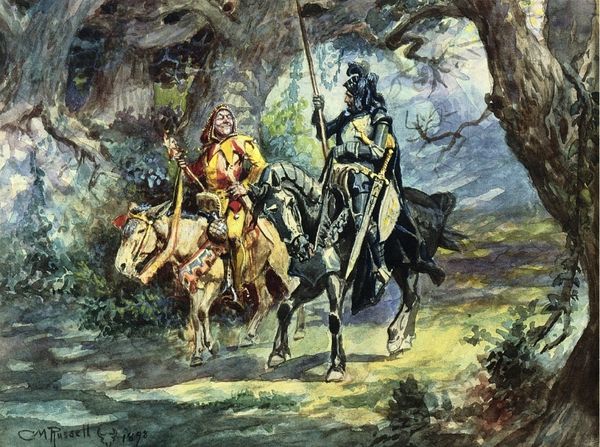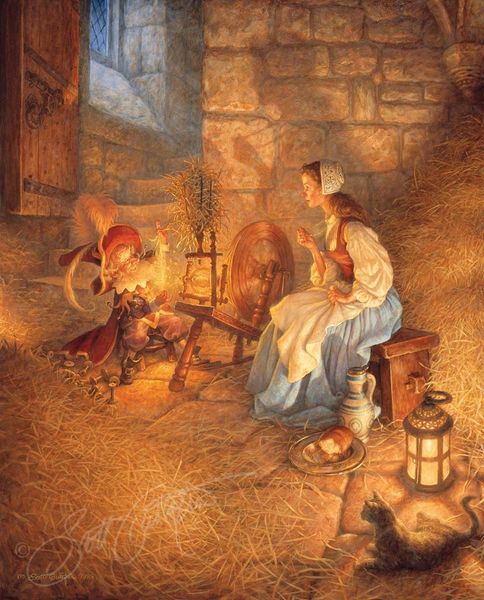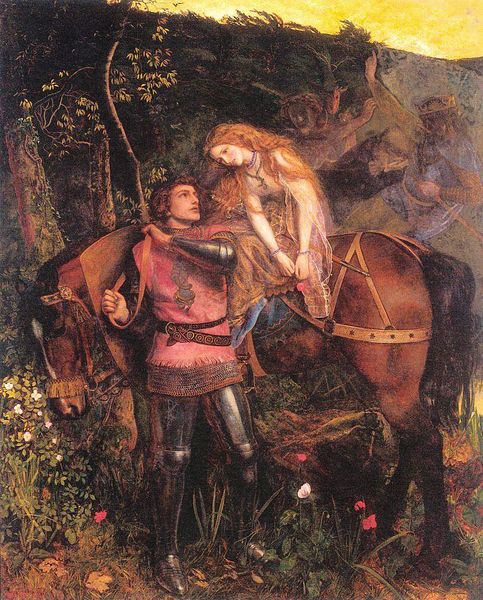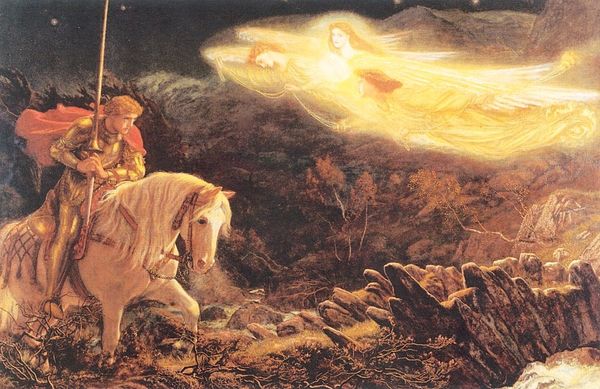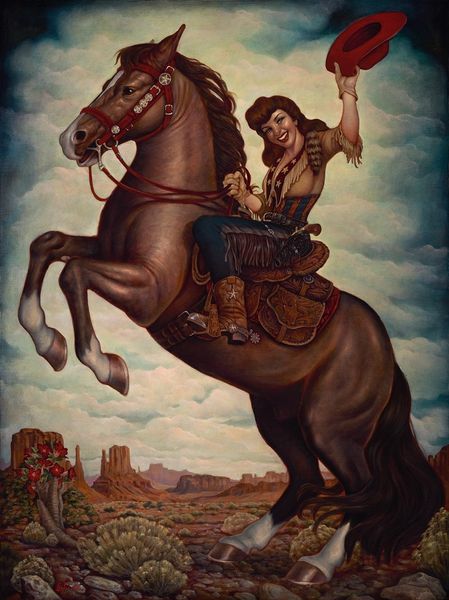
Dimensions: 52.5 x 43 cm
Copyright: Public domain
Curator: Today we’re looking at Arthur Hughes’s 1908 painting, "The Overthrowing of the Rusty Knight". Editor: Gosh, it feels like a stage play somehow. All that intense melodrama! Is this damsel in distress about to faint, or simply offering thanks for her...knight-errant service? I half expect her to break into song! Curator: Right, well, context is key. Arthur Hughes was a British painter associated with the Pre-Raphaelite movement. A group profoundly influenced by medievalism. They rejected what they saw as the shallow artistic conventions of the time and turned to the art, spirit, and aesthetic values of the medieval world. This particular painting leans into an idealized narrative format, touching on history, mythology, and allegory all at once. Editor: So, like, medieval fan fiction, but with impeccable detail? Because look at that armor gleam. The defeated knight has lost badly too, with a pretty unceremonious tumble down from the top of those rather sharp looking rocks! It’s definitely visually arresting. The composition with the elevated "good" knight literally looking down upon both his defeated predecessor and damsel…it feels very pointed. Curator: I'd say you're not wrong. Hughes would've been deeply engaged in socio-political issues as well, even those reflected in public role art. The theme of overthrowing, as the title implies, and moving toward brighter futures, are very in keeping with romantic narratives about war. Editor: Bright, maybe? Depends on if the bright future contains constant, overbearing patriarchal protection! Curator: It's tempting to view this in terms of 21st-century sensitivities. What would Hughes have known of our own times? He gives us all of the fairy tale elements. We should ask why he still finds these relevant even in the Edwardian period? What new meanings are brought to it by then? The role of women had begun changing socially, politically. The work could almost be a criticism or satire, depending on how far the contemporary viewer engages with this knowing the era’s politics of imagery. Editor: All that's to say: There is far more to the apparent melodrama, then? As is ever the case in art. Curator: Exactly. Every painting's an onion, so long as we care to peel back the layers. Editor: Onions, I agree with that. They do make you cry. Thanks for helping peel that back. Curator: My pleasure. I find it helpful too to have new viewpoints shed their light.
Comments
No comments
Be the first to comment and join the conversation on the ultimate creative platform.


